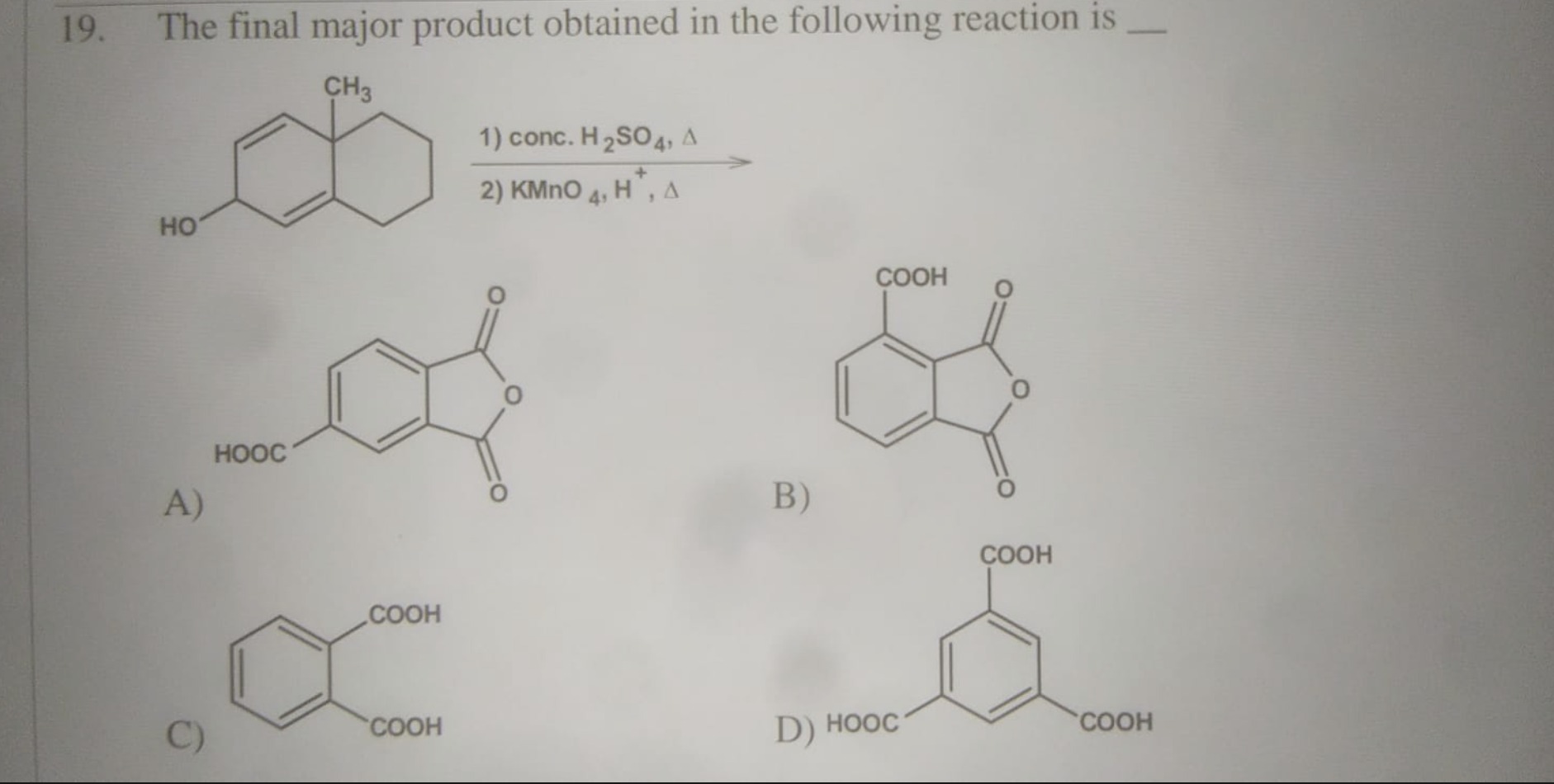Question
Question: 19. The final major product obtained in the following reaction is __ 1) conc. H2SO4, Δ + 2) KMnO4, ...
- The final major product obtained in the following reaction is __
- conc. H2SO4, Δ
- KMnO4, H , Δ

Chemical structure of a benzene ring fused to a five-membered ring. The benzene ring has a carboxylic acid group (HOOC) attached to one carbon. The five-membered ring is a cyclic anhydride with two carbonyl groups (C=O) and an oxygen atom (O) in the ring.
Chemical structure of a benzene ring fused to a five-membered ring. The benzene ring has a carboxylic acid group (COOH) attached to one carbon. The five-membered ring is a cyclic anhydride with two carbonyl groups (C=O) and an oxygen atom (O) in the ring.
Chemical structure of a benzene ring with two carboxylic acid groups (COOH) attached to adjacent carbons.
Chemical structure of a benzene ring with three carboxylic acid groups (COOH) attached to carbons in a 1,3,5 arrangement.
A)
Chemical structure of a benzene ring fused to a five-membered ring. The benzene ring has a carboxylic acid group (HOOC) attached to one carbon. The five-membered ring is a cyclic anhydride with two carbonyl groups (C=O) and an oxygen atom (O) in the ring.
Solution
Explanation of the solution:
- Step 1 (Conc. H₂SO₄, Δ): The acid‐catalyzed conditions dehydrate and rearrange the bicyclic precursor so that it aromatizes.
- Step 2 (KMnO₄, H⁺, Δ): The formed aromatic ring has a benzylic –CH₃ group; strong oxidation converts this group to –COOH. Under the reaction conditions, the o‐dicarboxylic acid thus produced cyclizes to form a five‐membered cyclic anhydride ring fused to the benzene ring (i.e. phthalic anhydride).
